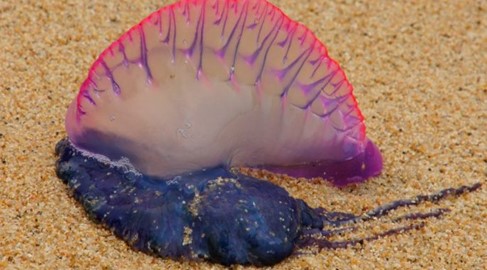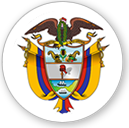February and March, are the common months for this species to appear because at this time of year the currents and winds are stronger, what favors their displacement.
 Due to the appearance of individuals of the species Physalia physalis, commonly known as the Portuguese Frigate, en las playas de Riohacha, Regional Autonomous Corporation of La Guajira, alerts bathers and other beach users in order to avoid injuries and risks from possible contact.
Due to the appearance of individuals of the species Physalia physalis, commonly known as the Portuguese Frigate, en las playas de Riohacha, Regional Autonomous Corporation of La Guajira, alerts bathers and other beach users in order to avoid injuries and risks from possible contact.
The specialists in this type of species recommend that before the sighting of an individual the person should avoid touching or approaching and in case of seeing them floating on the surface of the sea, get away from these, since its tentacles can reach up to 10 meters in length and are laden with nematocysts, which are capsules with poison that they use to capture prey. Due to its high toxicity and stinging nature, this species is considered dangerous for humans, causing skin lesions characterized by intense pain., edema and inflammation and in extreme cases, breathing problems and even cause cardiac arrest.
The presence of the species Physalia physalis on the beaches it is common in the months of February and March, because at this time of year the currents and winds are stronger, favoring their displacement. Although it is often called “jellyfish”, the Portuguese frigate is actually a hydrozoan, i.e., a colony of floating polyps made up of colonial organisms each subspecialized to keep the colony alive; It consists mainly of a gelatinous sail that is responsible for displacement when driven by the wind.
The Portuguese frigate constitutes an important part of the food chain, being part of the diet of species such as loggerhead turtles (Caretta caretta) and tortoiseshell (Eretmochelys imbricata), sea slug (Glaucus atlanticus), the violet snail (Janthina janthina) and the sunfish (Great great) that feeds on jellyfish, also, offers shelter and protection to different species of fish that are resistant to its toxins.































Leave a reply
I am sorry, you should be connected to post a comment.